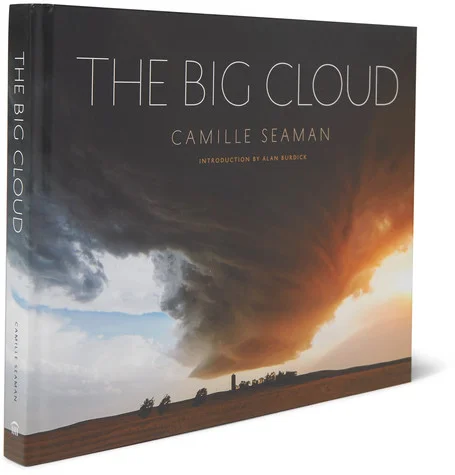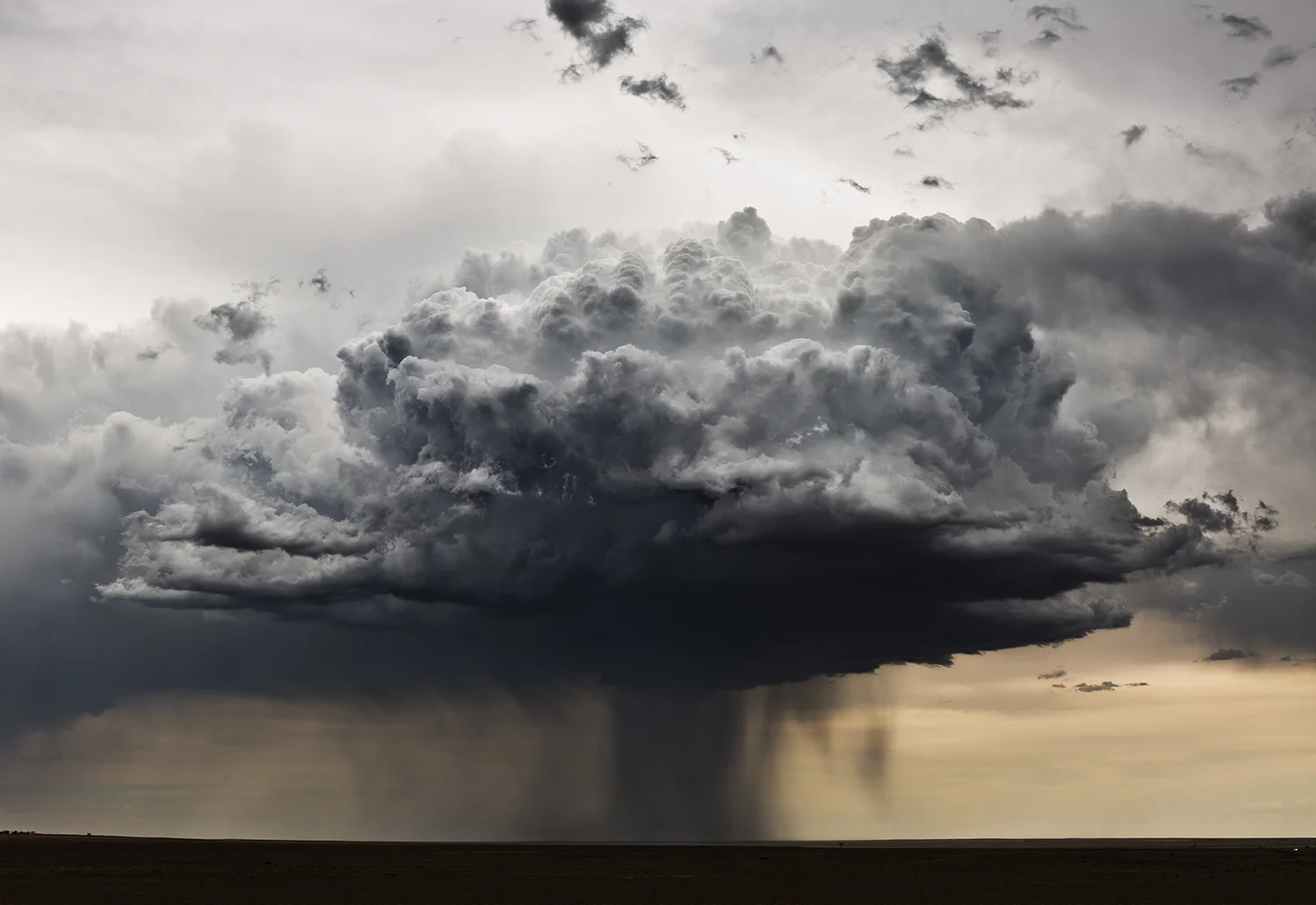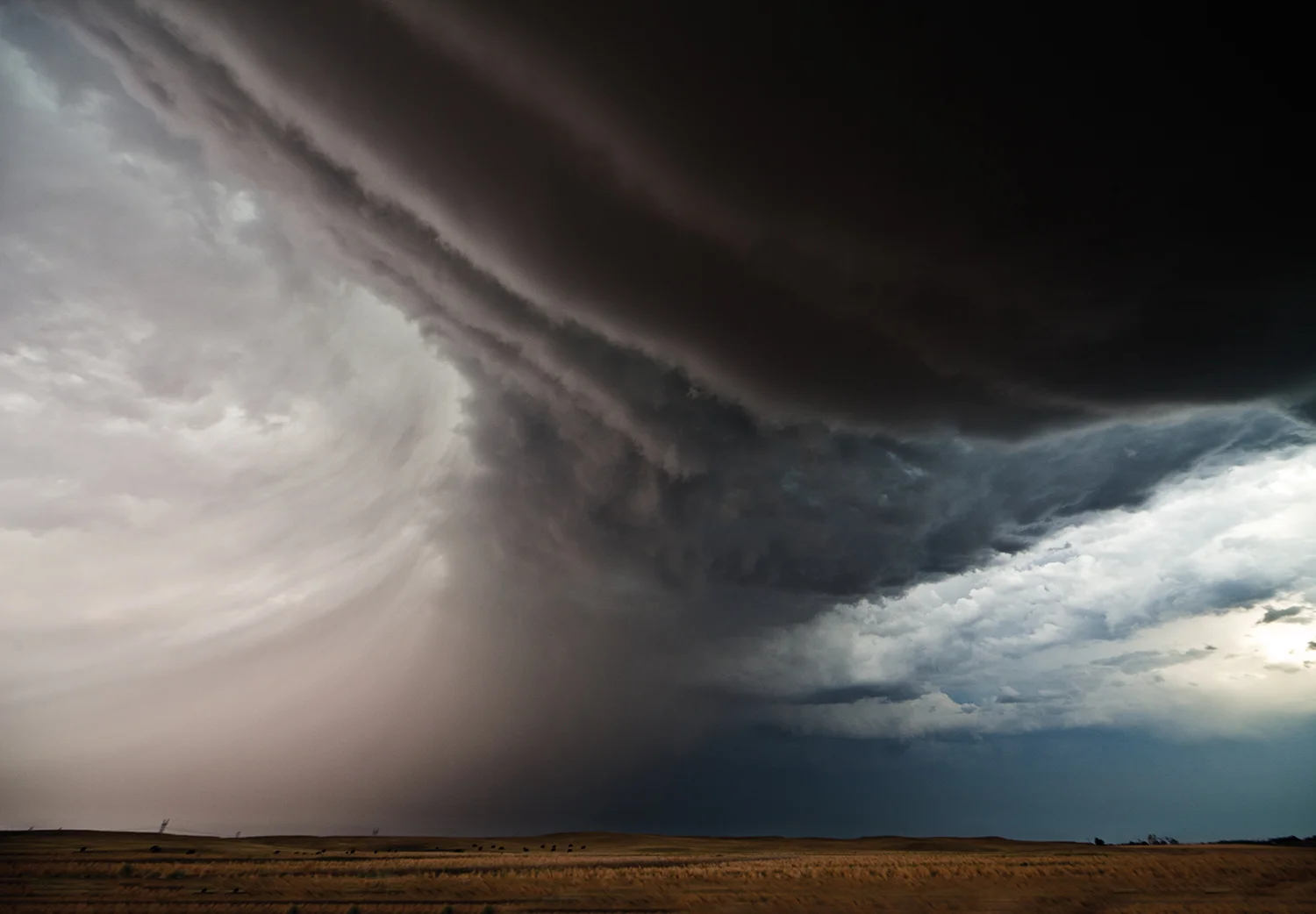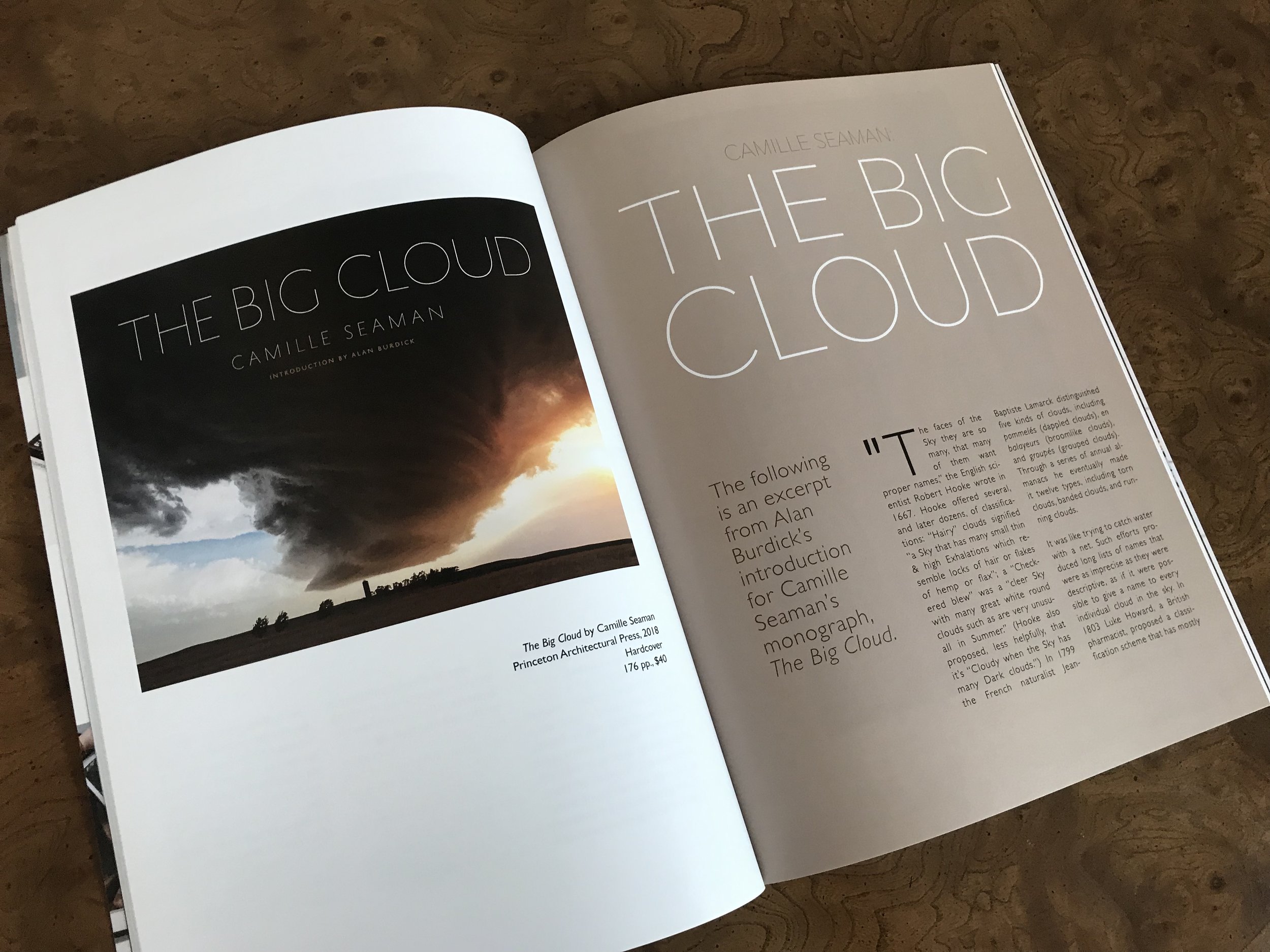The following is an excerpt from Alan Burdick’s introduction for Camille Seaman’s monograph, The Big Cloud.
The Big Cloud by Camille Seaman
Princeton Architectural Press, 2018
Hardcover
176 pp., $40
“The faces of the Sky they are so many, that many of them want proper names,” the English scientist Robert Hooke wrote in 1667. Hooke offered several, and later dozens, of classifications: “Hairy” clouds signified “a Sky that has many small thin & high Exhalations which resemble locks of hair or flakes of hemp or flax”; a “Checkered blew” was a “cleer Sky with many great white round clouds such as are very unusuall in Summer.” (Hooke also proposed, less helpfully, that it’s “Cloudy when the Sky has many Dark clouds.”) In 1799 the French naturalist Jean-Baptiste Lamarck distinguished five kinds of clouds, including pommelés (dappled clouds), en balayeurs (broomlike clouds), and groupés (grouped clouds). Through a series of annual almanacs he eventually made it twelve types, including torn clouds, banded clouds, and running clouds.
It was like trying to catch water with a net. Such efforts produced long lists of names that were as imprecise as they were descriptive, as if it were possible to give a name to every individual cloud in the sky. In 1803 Luke Howard, a British pharmacist, proposed a classification scheme that has mostly stayed with us. It introduced four basic kinds of clouds: cirrus, stratus, cumulus, and nimbus, the Latin words for curl, layer, mass, and rain. But it also proposed an array of sub-categories—cirrocumulus, cumulostratus—that recognized the fact that one kind of cloud could turn into another. Howard also acknowledged that clouds obey earthbound physics; they don’t rise or float by their own power but are forever galling, kept aloft only by upward currents. Inspired by Howard, the German writer Johann Wolfgang von Goethe wrote a series of poems about clouds, including one to Howard himself: “That which no hand can reach, no hand can clasp, He first has gain’d, first held with mental grasp.”
Deluge of Rain in Haswell, Colorado
Three things combine to form a cloud, we now know: water, temperature, and air pressure. Water evaporates into the air; the warmer the air pocket the more water it can hold. The air cools as it rises, and the water condenses into visible droplets; these may cycle around in a cloud until finally their weight drags them back to earth in the form of rain, hail, sleet, or snow. Critically, however, the water needs something to condense upon: fine particles of dust or sediment lifted by the winds, grains of pollen, salt from the sea, even living microbes. Parts of Africa are fertilized by dust transported across the Atlantic from South America. On occasion red sand from the Sahara is blown aloft and carried to Scandinavia, where it falls as pink snow. If clouds are not alive exactly they are products of and platforms for the living. Together they are an airborne sea, washing nutrients and even organisms from one part of the planet to another.
The appeal of clouds is obvious: no two are the same, and no one is the same for long. And they not only manifest change but inflict it as well. A cloud can be beautiful, terrible, or both—the embodiment of the sublime. Few other things on earth still present us with a force larger than ourselves. To watch a supercell gather force over the plains, as the storm chasers take such pleasure in doing, is to watch Zeus take shape on earth. We’ve learned enough over the centuries to know that clouds aren’t supernatural; rather they represent all that is natural, fiercely condensed and sweeping, and we stand beneath them awed and merely human.
Inflow Bands, Chappel, NE, 2012
But our relationship to them is changing, growing hazy. Recently meteorologists added several new cloud types to the known pantheon, and some of them describe clouds that are created by us: Cumulus homogenitus describes the cloud formation produced by smokestacks and steam plants; Cirrus homomuatus are the high-elevation condensation trails produced by airplanes. We are changing the face of the sky. And we are altering its mood; scientists hesitate to link specific storms to global warming, but it’s clear that, on the whole, climate change is making extreme-weather events more powerful and perhaps more common. When we look to the sky, increasingly the face we see is ours.
Alan Burdick is a former staff writer for The New Yorker and a frequent contributor to its science-and-tech blog. His writing has also appeared in the New York Times Magazine, Harper’s, GQ, and Discover, among other publications. His book Out of Eden: An Odyssey of Ecological Invasion was a finalist for the National Book Award and won the Overseas Press Club Award for environmental reporting.
Don’t Take Pictures Issue 12





